Polarization sensing with visual detection
- PMID: 10204029
- PMCID: PMC6830064
- DOI: 10.1021/ac981301i
Polarization sensing with visual detection
Abstract
We describe a new approach to fluorescence sensing which relies on visual determination the polarization. The sensing device consists of a fluorescent probe, which changes intensity in responses to the analyte, and an oriented fluorescent film, which is not affected by the analyte. An emission filter is selected to observe the emission from both the film and the sensing fluorophore. Changes in the probe intensity result in changes in the polarization of the combined emission from the sensor and reference. The degree of polarization can be detected visually using a dual polarizer with adjacent sections oriented orthogonally to each other. The emission passing through the dual polarizer is viewed with a second analyzing polarizer. This analyzer is rotated manually to yield equal intensities from both sides of the dual polarizer. This approach was used to measure the concentration of RhB in intralipid and to measure pH using 6-carboxyfluorescein. The analyzer angle is typically accurate to 1 degree, providing pH values accurate to +/- 0.1 pH unit at the midpoint of the titration curve. We also describe a method of visual polarization sensing that does not require an oriented film and that can use the same fluorophore for the sample and reference. These approaches to visual sensing are generic and can be applied to a wide variety of analytes for which fluorescent probes are available. Importantly, the devices are simple, with the only electronic component being the light source.
Figures
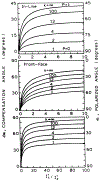


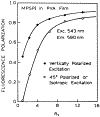
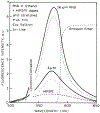

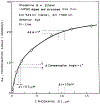
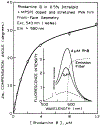
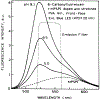
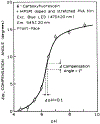
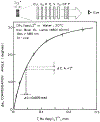
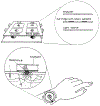

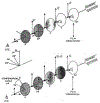
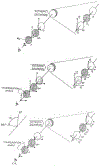
Similar articles
-
Polarization-Based Sensing with a Self-Referenced Sample.Appl Spectrosc. 1999 Sep 1;53(9):1149-1157. doi: 10.1366/0003702991947964. Appl Spectrosc. 1999. PMID: 32255815 Free PMC article.
-
Polarization sensing of fluorophores in tissues for drug compliance monitoring.Anal Biochem. 1999 Sep 10;273(2):204-11. doi: 10.1006/abio.1999.4213. Anal Biochem. 1999. PMID: 10469491 Free PMC article.
-
Anisotropy-based sensing with reference fluorophores.Anal Biochem. 1999 Feb 15;267(2):397-405. doi: 10.1006/abio.1998.3029. Anal Biochem. 1999. PMID: 10036147 Free PMC article.
-
Differential polarization nonlinear optical microscopy with adaptive optics controlled multiplexed beams.Int J Mol Sci. 2013 Sep 9;14(9):18520-34. doi: 10.3390/ijms140918520. Int J Mol Sci. 2013. PMID: 24022688 Free PMC article. Review.
-
Ratiometric fluorescent nanoprobes for visual detection: Design principles and recent advances - A review.Anal Chim Acta. 2019 Nov 4;1079:30-58. doi: 10.1016/j.aca.2019.06.035. Epub 2019 Jun 17. Anal Chim Acta. 2019. PMID: 31387719 Review.
Cited by
-
Polarization-based oxygen sensor.Analyst. 1999 Jul;124(7):1041-4. doi: 10.1039/a900364i. Analyst. 1999. PMID: 10736861 Free PMC article.
-
Polarization-Based Sensing with a Self-Referenced Sample.Appl Spectrosc. 1999 Sep 1;53(9):1149-1157. doi: 10.1366/0003702991947964. Appl Spectrosc. 1999. PMID: 32255815 Free PMC article.
-
Multifunctional Optical Thin Films Fabricated by the Photopolymerization of Uniaxially Oriented Lyotropic Liquid Crystal Monomers for Electro-Optical Devices.Sci Rep. 2016 Nov 4;6:36472. doi: 10.1038/srep36472. Sci Rep. 2016. PMID: 27812042 Free PMC article.
-
Optical determination of glutamine using a genetically engineered protein.Anal Biochem. 2001 Apr 1;291(1):89-95. doi: 10.1006/abio.2001.4998. Anal Biochem. 2001. PMID: 11262160 Free PMC article. Clinical Trial.
-
A protein biosensor for lactate.Anal Biochem. 2000 Jul 15;283(1):83-8. doi: 10.1006/abio.2000.4611. Anal Biochem. 2000. PMID: 10929812 Free PMC article.
References
-
- Spichiger-Keller UE Chemical Sensors and Biosensors for Medical and Biological Applications; Wiley-VCH: New York, 1998; p 413.
-
- Kunz RE, Ed. Sens. Aduators B 1997, B38, 1–188; 1997, B39, 1–468 (Proc. of 3rd European Conference on Optical Chemical Sensors and Biosensors, Europt(R)odeIII).
-
- Thompson RB, Ed. SPIE Proc. 1997. , 2980, 582.
-
- Lakowicz JR, Ed. Topics in Fluorescence Spectroscopy, Volume 4: Probe Design and Chemical Sensing; Plenum Press: New York, 1994; p 501.
-
- Schulman SG, Ed. Molecular Luminescence Spectroscopy, Methods and Applications: Part 3; John Wiley & Sons: New York, 1993; p 467.
Publication types
MeSH terms
Substances
Grants and funding
LinkOut - more resources
Full Text Sources
Other Literature Sources

